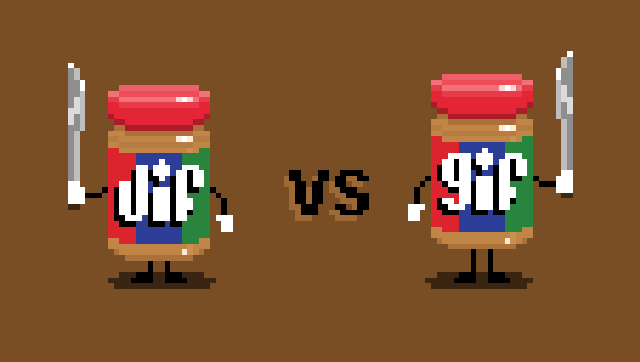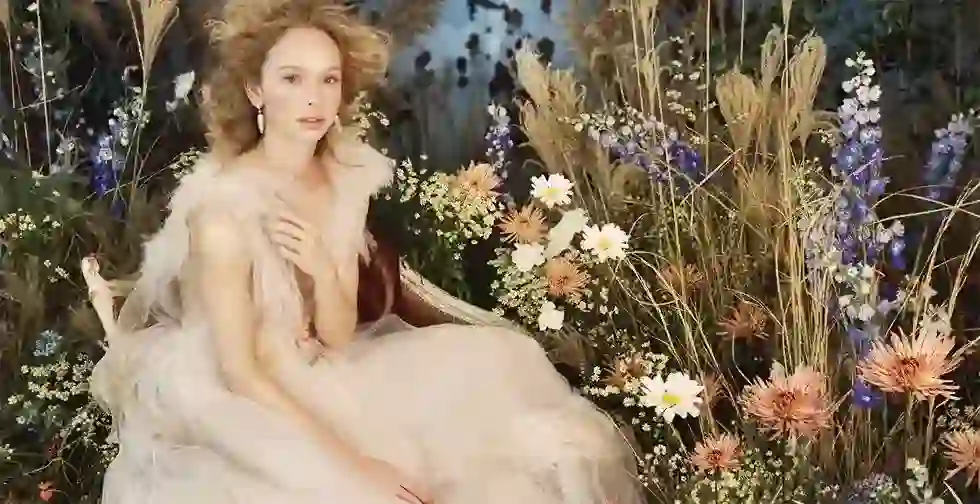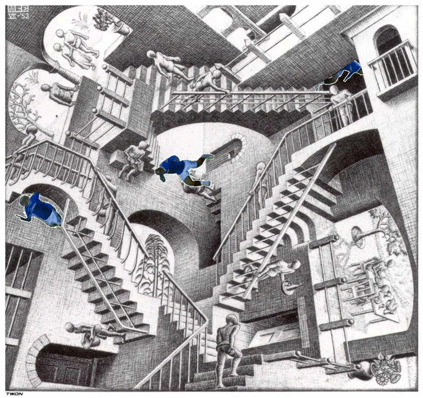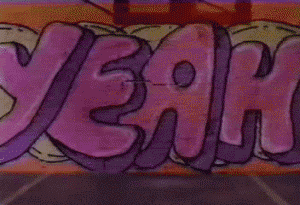GIFs: The Journey from Website Ornament to Fine Art
In June of this year, the GIF will celebrate its 29th birthday. The file format has been around even before the first Internet website came online. Unexpectedly It has managed not only to survive this long but also go through some very dramatic and interesting changes. In this article we will briefly go through the journey the GIF has made from simple website ornament in the early days of the internet to new age artistic medium. And if you’re really into GIFs, by the end of this article you’ll also get some resources to create your own.
GIFs were created by Compuserve, the first online commercial service, in hopes of providing small sized image files for the firm’s download areas. The first GIF format was released in 1987 and was named 87a. The format featured the ability to compress multiple images in a stream. The following version of the format called 89a was released in 1989 and improved on the 87a with animation delays, background colors and storage of metadata.
The term “GIF” was adopted by the company after observing that the first six bytes of a GIF file. When interpreted as ASCII these six bytes read “GIF87a” and “GIF89a” according to the version of the format used.

Upon release, Steve Wilhite one of the formats’ creators at Compuserve, stated that they not only meant for the files to be called “GIFs” but they should also be pronounced with a soft “G”. The creators actually intended for the term to be pronounced exactly like the name of a well-known American peanut butter brand, Jif, often spoofing the brand’s television commercials by saying: “Choosy developers choose GIF”. Nowadays, the controversy over the pronunciation of the word “GIF” has carried on with even dictionaries split on the phonetics.
Pronunciation aside, this wasn’t the only major controversy in the history of the GIF. The compression technique used by the image format, had been patented by a company called Unisys in 1985, two years before the Compuserve release. The company denied knowing that the technique had been patented and engaged in a copyright disagreement that was resolved in 1994. Unisys then announced that it would permit commercial use of the format in exchange for a small fee.

Following the resolution of the disagreement, web developers threatened to boycott the GIF and use the new patent-free PNG format that appeared in 1996. GIFs, however, did not disappear contrary to all the controversy surrounding them. With the integration of GIF support in the Netscape browser (one of the first, full-fledged Internet browsers), the image format gained new life. Steve Wilhite, the creator of the GIF referenced this fact in an interview for the Daily Dot saying:
[pixel77_quote type=”2″ quote=’“What has made GIF hang around is the animation loop that Netscape added. If Netscape had not added GIF in their browser, GIF would have died in 1998.”’]
GIFs as social expressions
After the boost GIFs received from Netscape, early World Wide Web developers started using the format when working on their newly found Internet Real-Estate. Thus, spinning “Under Construction” signs and animated hardhats embellished many early Internet sites.



It was now at turn of the millennium that GIFs gained their place on the road to stardom. From the humble beginnings of simple website ornaments, GIFs started changing into a light-hearted and entertainment related movement. Animations like Peanut Butter Jelly Time (PBJT) and Dancing Baby ( both showed below) became internet staples and a means to bring fun and dynamic content to the Internet.


With the founding of Myspace on August 1, 2003, gave the GIF the opportunity to become a social communication phenomenon. The website soon became a breeding ground for any number of styles of GIFs, used to convey both messages and emotional states. People realized that GIFs, being situated somewhere between static image and video, lend themselves much more easily to social media than other mediums. As Gizmodo explains:
[pixel77_quote type=”2″ quote=’“A good GIF, and anything is GIF-able these days, captures just enough of a specific moment to illustrate emotion yet leaves enough out to spark your curiosity. It’s a beautiful balance of amusement and wonder.”’]
Myspace was not the only platform to help the spread of GIFs. After Tumblr was launched in February 2007, it was the only website to allow users to share GIFs quickly without the need to upload and repost the files every time. Later, the platform offered the possibility to upload 2 MB GIFs, yet again easing the use of the format on the Internet. Couple this with the huge community the platform garnered and the need for social interaction and shared entertainment was met.
This necessity has carried on till today. Nowadays, instead of watching an entire awards ceremony or sports event, you can get the most interesting highlights in the form of GIFs. One such example is this years’ Oscars Gala. The GIFs extracted from the ceremony footage offer the best bits in a very short, fast and wildly hilarious package. One of my favorites is Oprah Winfrey dash on the red carpet, seemingly to escape Lady Gaga.

GIFs as art
Faced with the unprecedented usage of GIFs as an immediate and highly emotional means of communication, artists and commercial designers saw the GIF as a new medium. These artists took the image format to new heights, introducing uses and perspectives no one had ever seen.
One of the most well known GIF artists is graphic designer David Szakaly, who goes by the online name Davidope, is thought to have changed the way people look at GIFs as an art medium. His works are usually done in black-and-white and feature an infinite loop effect. Here are some examples of his work.

Apart from perfectly looped images and clips some of the most striking styles of GIFs are the cinemagraphs and stereograms.
Cinemagraphs were made famous by graphic artist Kevin Burg and photographer Jamie Beck. These GIFs feature a static image as the focus of the art piece and an animated detail or two to bring the scene to life. Most of the work involved in producing such an image is done in post-production, given that the more seamless the movement, the better the result. Here are some examples of the two artists’ works, if you want to see more you can go on their website and bask in the superb imagery.



Stereograms are GIFs that use the principles of 3D imagery to create the illusion of depth. You create an image from the perspective of each eye and then alternate between them rapidly. The resulted image creates the already mentioned illusion of depth and sideways movement that conveys the 3D sensation.

Fashion photographers Pamela Raed and Matthew Rader, are famous for pushing this style of GIF to new heights. A MakeUseOf article states that their “Flowers” project entailed shooting 360-degree videos of a model. They then placed the clips in computer generated environment, allowing the artist to choose any camera angle for any scene. The result is a stunning and mesmerising collage of movement and angles.
Other artists have chosen not to push the envelope and further GIFs as an artistic medium, but rather chose to shed new light on timeless classics through the use of the format. Rino Stefanota Gliafierro is one such artist that animated classical paintings and transformed them into incredible dynamic masterpieces. In an interview for Buzzfeed, he said that he spent 5 years developing, animating and editing photos of the classical paintings to then collate them in a short film called Beauty.



The amount of work artists have put into using GIFs as a full-fledged artistic medium, has prompted institutions like the Museum of the Moving Image to pay attention. As such, the museum has hosted some exhibitions revolving around GIFs, the latest of which was titled “We Tripped El Hadji Diouf: The Story of a Photoshop Thread”. The idea for the exhibition came from a Photoshop thread where users started editing doctored footage of soccer player El Hadji Diouf’s fall during a match. The result was a mix of funny and even artistic remixes of the original footage. Here are some examples of the GIFs presented at the exhibition:



Making your own GIFs
Given the widespread use of the GIF format, the folks over at Google have made it very easy to create GIFs right from youtube. If you stumble upon a scene you want to turn into a GIF, simply add “gif” after the “www.” And leave the rest of the URL as it is. Here’s an example of a Youtube URL before and after the addition of the phrase:
Before
After
This will take you to GIF Youtube where you will be presented with editing options to create your own GIFs.
An alternative to GIF Youtube, is the renowned GIPHY. Similar to the method above, you paste your Youtube, Vimeo, Vine link or video URL and gain access to an editor to create your animation. GIPHY also has the added benefit of being one of the largest internet collections of GIFs. If you can’t find the reaction GIF you are looking for there, you will be hard pressed to find it elsewhere.
If by any chance, however, you want to create your GIFs the old fashioned way with an offline program then the best tool to use is GIMP Image Editor. This program has all the features you need and will get the job done fast and efficiently, and what’s more, it’s totally free.
The future
The future of GIFs is somewhat uncertain given that new video formats can easily compete with the benefits and limitations of the GIF. The format, however, will remain in use for many years to come both because of its merits as an artistic medium and because of the sentimental value it has gained over time. Like emoticons and emojis, the GIF has inextricably ingratiated itself in our communication habits earning its rightful place in the Internet Hall of Fame.
So there you have it a brief history of the GIF file format and its evolution on the Internet. Now tell us in the comment section below what are your favourite GIFs.

This is absolutely great!
This is absolutely great!